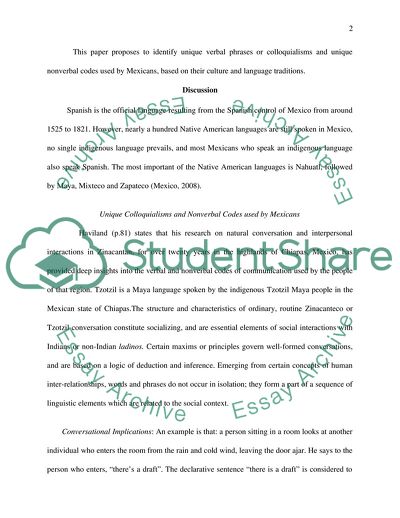Tradition and Culture in Mexico Essay Example | Topics and Well Written Essays - 1750 words. https://studentshare.org/culture/1714721-dimensions-of-the-verbal-and-nonverbal-contexts
Tradition and Culture in Mexico Essay Example | Topics and Well Written Essays - 1750 Words. https://studentshare.org/culture/1714721-dimensions-of-the-verbal-and-nonverbal-contexts.


